National Crafts Museum: Away from Delhi’s chaos, history in all its glory
New Delhi | Updated: December 9, 2019 4:54:41 pm
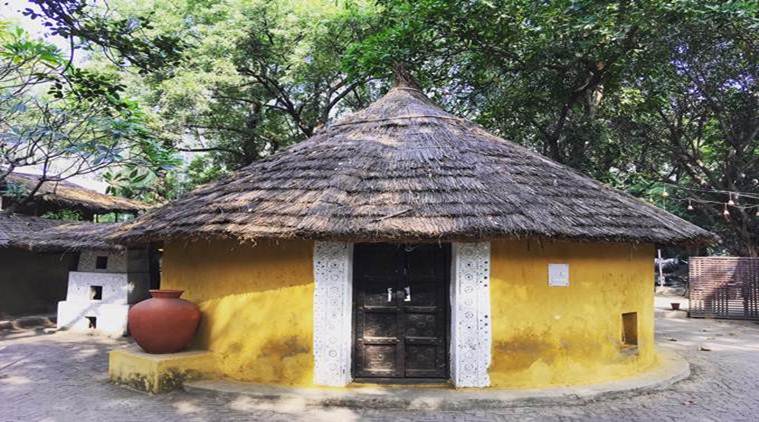
Mirror work Gujrat Hut made from sun-dried bricks at the Crafts Museum. (Photos: Aashi Sadana)
Written by Aashi Sadana
A treasure trove of over 33,000 objects, including handicrafts, textiles, figurines, paintings and more, collected from the farthest corners of the country. That is the National Crafts Museums at Pragati Maidan, in the heart of New Delhi, set up way back in 1956 by the All India Handicrafts Board.
Earlier this year, Union Textile Minister Smriti Irani inaugurated a new textile gallery at the museum. A new mini collection from Sri Lanka will soon be a part of the museum, which serves as a platform for the development and revival of Indian crafts, informs a museum official. In their book, Museums of India: National Handicrafts and Handlooms Museum, New Delhi, Jyotindra Jain and Aarti Aggarwala write, “It has defined criteria of excellence by determining what should be preserved and encouraged.”
Entering the gravel path, intricate regional murals can be seen on the colourful walls, which are embellished with rich motifs including mud mirror work from Gujarat and Warli and Mithila paintings from Maharashtra and Bihar respectively. If you fancy getting similar artwork for your home, the contact details of each artist are helpfully mentioned alongside their work.
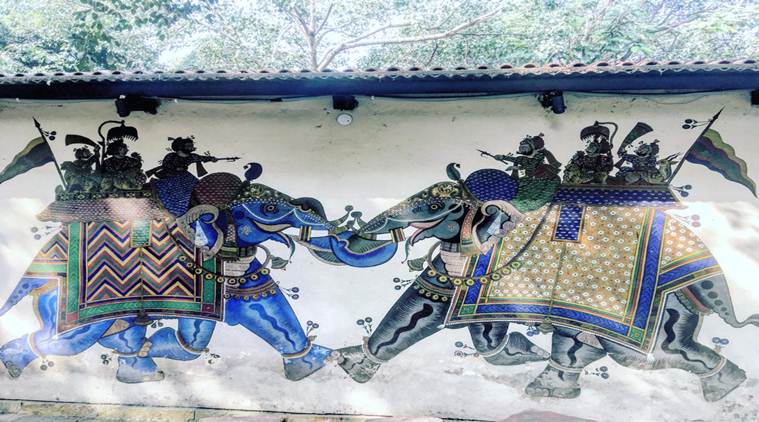
Wall murals at the Crafts museum
The museum has three parts — the village-disguised outdoor area, indoor galleries exhibiting a huge array of handicrafts and live crafts demonstrations of pan-Indian artisans.
The village complex
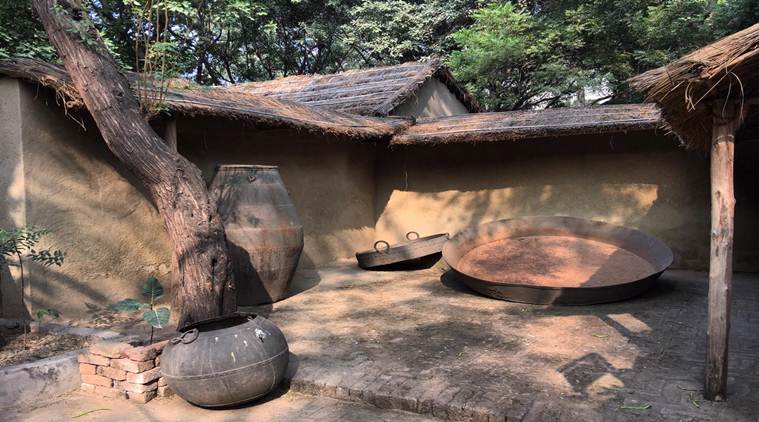
The Rajasthan Courtyard in the village complex
Spread over five acres and with 15 life-sized structures of village abodes, courtyards and shrines, the village complex represents one of the most diverse sightseeing experiences. Interestingly, the complex is an extension of a temporary exhibition on the same theme that took place in 1972, a museum official told indianexpress.com.
The architect of this complex, Charles Correa, believed in designs that uplift local and historic cultures. Taking you back in time, the mammoth houses, the verandahs and fascinating array of daily objects blur out the city chaos. The rural scenes radiate with painted walls, mini niches, bright engravings and balconies.
Museum galleries
The museum has a total of five galleries out of which four are operational, while the fifth is currently under maintenance. These are set in traditional Indian houses with a verandah at the core.
Folk and tribal gallery

Kathputlis at the tribal gallery
If tribal and eco-friendly ways of living appeal to you, this gallery is a must-visit. The beautiful tribal art and daily objects, such as the one depicting Nagaland, opens a window to simpler times. Objects and paintings from Rajasthan and South India light up the gallery.
Don’t miss the festooned puppets (kathputlis), masks used in Durga Puja and Ramleela and cloth paintings or Pattachitra.
Bhuta gallery
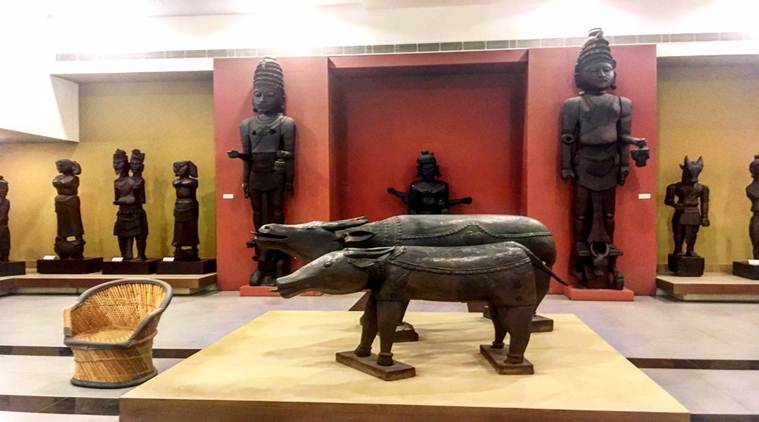
Large wooden statues at the Bhuta Gallery
You could be thrilled or spooked by this gallery. It houses large wooden statues called Bhutas that are believed to be spirits of one’s ancestors. India, among many other societies in the world, believes in worshipping the dead and Bhutas are a manifestation of this age-old belief. As you exit the gallery, you’re greeted by a miniature model of an old Bengal village and a tiny separate enclosure dedicated to beautiful Madhubani paintings.
Textile gallery
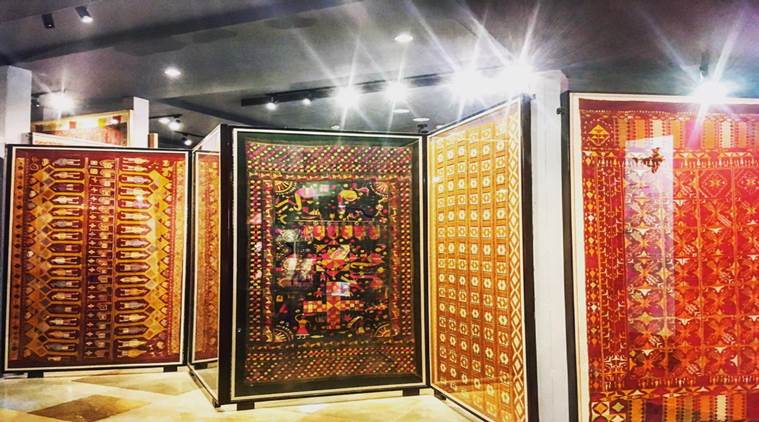
Phulkari display at the textile gallery
This one is for a history geek or fashion lover. A rich corpus of textiles has prevailed in the subcontinent since the Harappan civilisation. Specimens of khadi, brocade, phulkari, Banjara embroidery and much more are discovered here.
Cult craft gallery
An eighteenth-century chariot in the verandah dwarfs the black rustic gates of this gallery. The immersive aura comes from the objects used in various religious rituals of the country. An extensive collection of masks, vehicles, symbols and votive objects associated with Shiva and his forms are displayed here. This gallery allows us to trace the evolution of accessories used in temples and other places of worship.
Keep a lookout for incense burners and their evolution, Jaina domestic temple and over 50 little Lord Ganeshas.
Live craft demonstrations
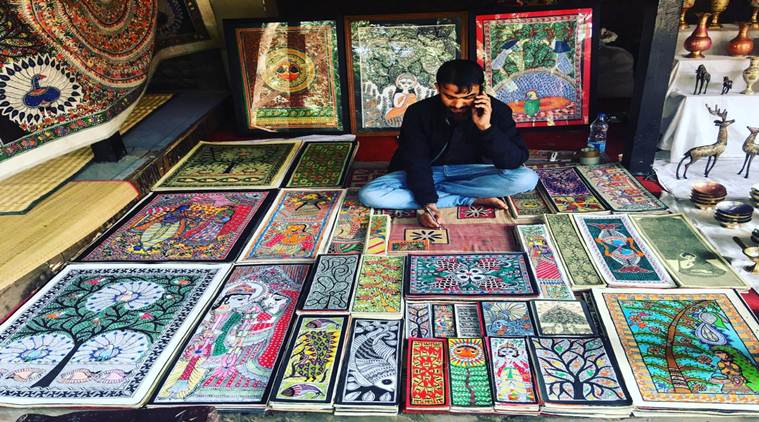
An artisan from Bihar selling his crafts at the museum
The Crafts Museum is doing its part in providing a livelihood to artisans of India. “Every month we host 25 artisans from across the country and provide them space to sell their products,” states a museum official.
A Madhubani painter from Bihar remarked, “I have travelled across the country, thanks to my art. We come here whenever the government invites us.” Like many others, he is a registered artisan under the Ministry of Textiles.
Other facilities
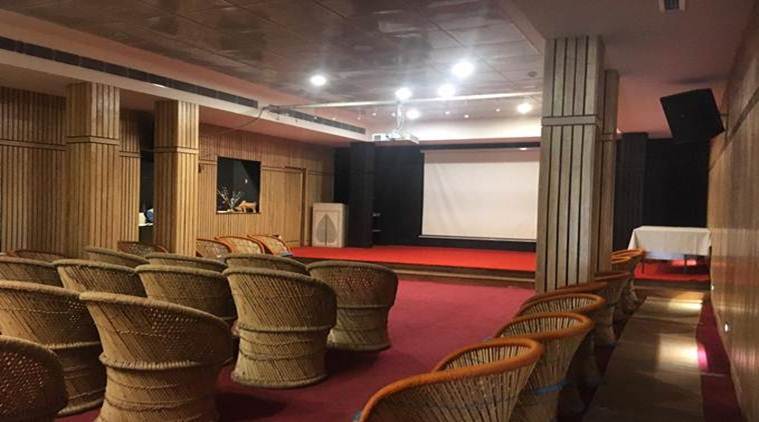
Theatre of the Audio-Visual room
The museum houses a small indoor theatre with a unique collection of documentaries and short films on Indian textiles and handicrafts.”We have more than 70 well- researched documentaries that you won’t find on YouTube or any other platform. We host lectures and discussions after the screening, which is conducted every 30 minutes, irrespective of the number of spectators from 10 am to 5.30 pm,” the theatre management informed.
The popular Cafe Lota, located right at the entrance of the museum, was “originally supposed to provide meals to our artisans before it transformed into a contemporary cafe,” according to an official. Today, it is a hub for food enthusiasts and critics alike.
Significantly, the museum enjoys popularity among the foreign audience as well, including prominent personalities such as former US First Lady Michelle Obama. “Regular visitors include students from design colleges like Pearl Academy, NIFT and Delhi School of Art along with year-round visits from schools across the country,” commented a museum official.
The average daily footfall, according to the caretaker, could vary between 1,000 to 2500 on weekends and during school visits. The museum official remarked: “People are not aware of how their ancestors lived; they must learn from simpler times, which is what makes the Crafts Museum important today.”
(The writer is an intern at indianexpress.com)
For all the latest Lifestyle News, download Indian Express App
© IE Online Media Services Pvt Ltd